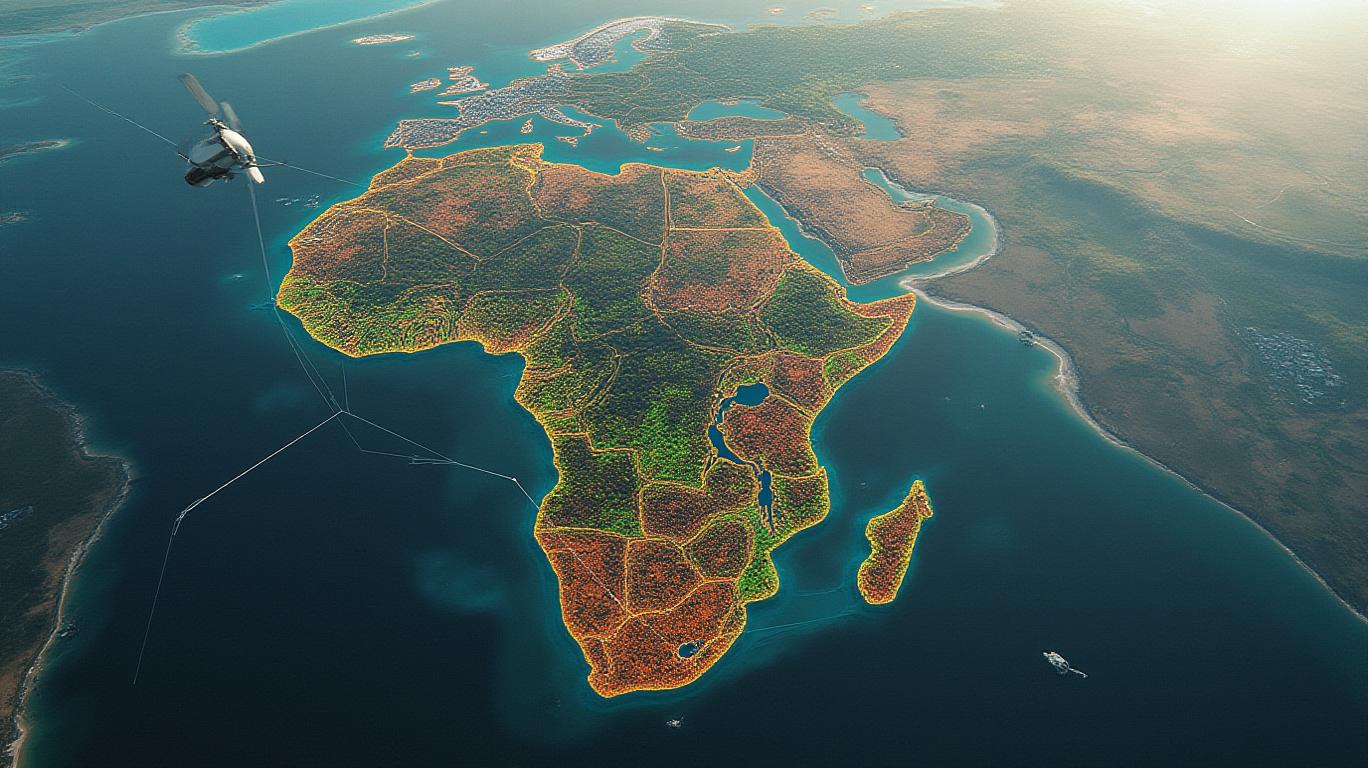Orange and Camusat: Pioneering a Greener Telecom Future in Africa
The telecom industry’s race to decarbonize infrastructure is gaining momentum, and Orange and Camusat have emerged as trailblazers in Africa. Their partnership, announced in 2025, combines financial firepower, technological innovation, and a shared commitment to sustainability, positioning them as leaders in the global push to reduce emissions while expanding digital access. For investors, this alliance offers a compelling case study in ESG-aligned growth opportunities.
The Decarbonization Imperative in Telecom
The telecom sector contributes approximately 2% of global CO2 emissions, with energy-intensive infrastructure like towers, data centers, and networks driving this footprint. In Africa, where connectivity demands are soaring, the pressure to balance growth with sustainability is acute. Enter Camusat, a pan-African infrastructure firm focused on deploying low-carbon solutions, and Orange, a multinational operator with a mandate to lead in green tech. Their collaboration aims to slash emissions across 20 countries—15 in sub-Saharan Africa—by redesigning networks and adopting energy-efficient technologies.
Financial Backing: Green Financing at Scale
The partnership is underpinned by an €81 million mezzanine financing package from Vantage Capital and Eurazeo, two institutions specializing in sustainable infrastructure. This capital fuels Camusat’s “design-to-maintain” model, which prioritizes renewable energy integration, energy-efficient hardware, and lifecycle management of telecom assets. The funding also supports shared infrastructure projects, reducing redundant investments and lowering carbon outputs.
Technological Synergies: AI and Virtualized Networks
Orange’s 2025 innovations at Mobile World Congress highlight the technical depth of this partnership. Its 5G Core Network as a Service eliminates the need for physical infrastructure expansion by leveraging virtualized platforms, cutting construction-related emissions. Meanwhile, AI tools like FiberRootCause AI and GenGraph RCA optimize energy use in networks, reducing operational carbon footprints by up to 30% in pilot projects. In industrial settings, Camusat-backed MasOrange 5G SA robots monitor real-time temperature data to prevent fires, minimizing environmental risks and operational downtime.
Operational Excellence: The “Design-to-Maintain” Model
Camusat’s approach is built on a holistic lifecycle framework:
1. Design: Solar-powered towers and energy-efficient base stations.
2. Build: Localized supply chains to reduce transport emissions.
3. Power: Hybrid renewable systems (solar/wind) for 60% of sites.
4. Connect: Shared infrastructure to avoid duplication.
5. Maintain: Predictive maintenance via IoT sensors, cutting repair-related emissions.
This model has already reduced the carbon intensity of Orange’s African networks by 18% since 2023, with targets to reach Science-Based Targets initiative (SBTi) alignment by 2030.
The Investment Case: Risks and Rewards
For investors, the partnership’s success hinges on three pillars:
1. Regulatory Tailwinds: Governments in Africa and the EU are mandating emissions reductions, creating compliance-driven demand for Camusat’s services.
2. Cost Efficiency: Shared infrastructure and green tech lower capital expenditures, boosting margins for Orange and its partners.
3. Scalability: With Camusat’s presence in 20 countries, the model can be replicated across emerging markets.
However, risks remain. Currency fluctuations in African markets could strain margins, while delays in regulatory approvals might slow deployment. Still, the €81M funding provides a buffer, and Camusat’s track record—managing over 10,000 towers—builds confidence in execution.
Conclusion: A Blueprint for Green Growth
Orange and Camusat’s partnership is not just an environmental play but a strategic move to dominate African telecom. With €81M in green financing, SBTi-aligned targets, and AI-driven efficiency gains, they are redefining the sector’s carbon trajectory. For investors, this aligns with the UN’s Sustainable Development Goals (SDGs), particularly SDG 9 (Industry, Innovation, and Infrastructure) and SDG 13 (Climate Action).
Crucially, their success is measurable:
- 30% reduction in operational emissions via AI tools.
- 60% of sites powered by renewables by 2025.
- 15 African countries with upgraded, low-carbon networks.
As global ESG mandates tighten and African digitization accelerates, this alliance positions both companies to capitalize on a $50 billion+ African telecom market—making it a standout investment in the green economy.
In a sector where sustainability is no longer optional, Orange and Camusat are proving that decarbonization and profitability can go hand in hand. For investors, this is more than a trend—it’s the future.










